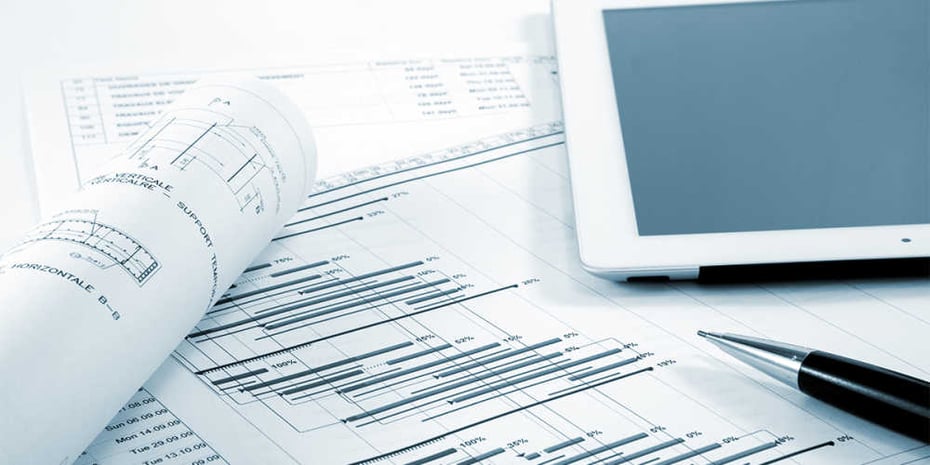Unlocking Performance: The Benefits of Construction Document Management Operating Systems
Unlocking Performance: The Benefits of Construction Document Management Operating Systems
Blog Article
Achieving Seamless Task Delivery: Designer's Comprehensive Strategy to Building File Management
In the world of style and building, the thorough orchestration of job elements is vital to success. One important element often undervalued is the management of building and construction files, which acts as the backbone of every job. construction document management. As engineers browse the intricacies of sychronisation, implementation, and style, an extensive method to document management becomes a cornerstone for attaining smooth task shipment. By dissecting the nuances of this process, revealing the important elements, and discovering ingenious technological options, architects introduce a pathway in the direction of increased efficiency and partnership within project groups. The combination of accuracy, modern technology, and partnership develops the cornerstone of an effective building endeavor, elevating the value of a structured record administration technique.
Relevance of Building Paper Monitoring
Reliable building and construction document administration plays an important function in making certain task success by helping with seamless interaction and company throughout the building and construction process. By keeping up-to-date and accurate building and construction records, designers can properly connect with professionals, subcontractors, and other stakeholders associated with the task. These records function as a reference point for all events, making sure that everybody is functioning from the same collection of information and lowering the possibility of misconceptions or errors.
In addition, building record administration aids architects stay organized by giving a centralized area for all project-related information, consisting of illustrations, specs, agreements, and correspondence. When needed, this company allows and improves the decision-making procedure for fast access to important project details. In addition, proper file monitoring can improve task effectiveness, lower costly delays, and inevitably bring about the successful conclusion of building and construction projects. Designers that focus on building record management established a strong structure for job success and demonstrate a dedication to providing high-quality results.
Crucial Element for Effective Paperwork

Establishing standard layouts and procedures guarantees consistency throughout all job files. Applying a durable file monitoring system that enables for variation control, gain access to limitations, and audit tracks significantly enhances the company and safety of job documents. By integrating these key components into building and construction record monitoring practices, designers can enhance processes, lower errors, and eventually add to the successful distribution of jobs.
Utilizing Innovation for Paper Organization
Leveraging innovative digital tools and software systems contributes in improving the company and availability of building documentation. Building companies can streamline their record monitoring processes by applying specialized software developed for the building and construction industry. These tools use features such as version control, cloud storage, and joint editing capacities, allowing group members to deal with records all at once and ensuring everybody has accessibility to the most up-to-date details.
One trick benefit of using innovation for paper company is the ability to create a central database for all project-related data. By storing files in a protected digital environment, designers can quickly look, get, and share info with stakeholders, minimizing the threat of variation conflicts or misplaced documents. Furthermore, progressed software remedies commonly include metadata tagging and indexing capabilities, enabling users to classify files effectively and retrieve them rapidly when needed.
Collective Strategies With Job Groups
To maximize project results, designers have to welcome collaborative strategies when collaborating with job teams to guarantee seamless interaction and control throughout the building and construction process. Collaboration with job groups is important for designers to efficiently handle building projects. construction document management. By cultivating open communication and synergy among all stakeholders, designers can simplify decision-making processes, address prospective problems proactively, and guarantee that everyone is aligned with the job goals
Engineers should establish clear lines of interaction with designers, specialists, clients, and various other essential group participants from the start of the task. Routine meetings, progress updates, and feedback sessions should be scheduled to maintain everybody informed and engaged. Using collaborative project monitoring tools can likewise help with real-time info sharing and paper collaboration, enhancing openness and efficiency.

Best Practices for Document Version Control

Final Thought
In conclusion, effective building file administration is critical for achieving smooth project shipment (construction document management). It is imperative for architects to implement ideal practices in document monitoring to effectively browse the complexities of building and construction tasks.
Effective building file administration plays an important function in ensuring task success by facilitating smooth interaction and organization throughout the building process. Additionally, correct record monitoring can boost project efficiency, decrease costly delays, and ultimately lead to the successful Visit Website conclusion of building and construction tasks.To enhance project results, engineers must accept collective methods when functioning with task groups to guarantee smooth interaction and sychronisation throughout the building process. Partnership with task teams is essential for engineers to successfully manage building tasks.In the world of collective building project management, preserving accurate control over record versions stands as a crucial practice for making sure job honesty and cohesion.
Report this page